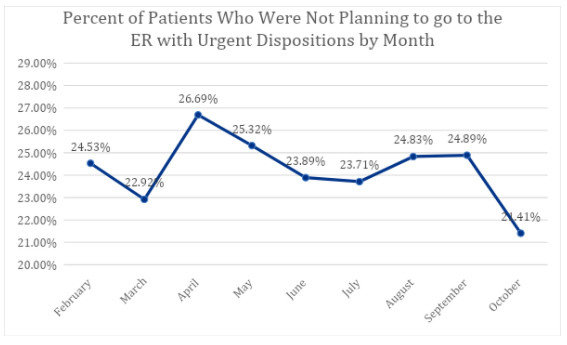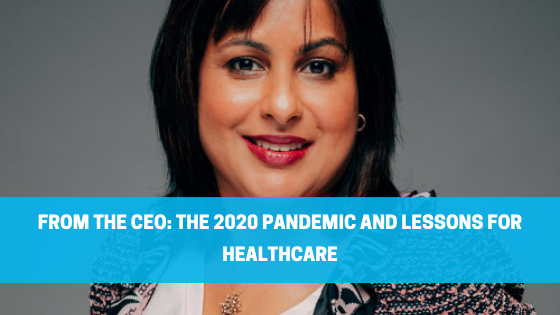2020 was a year that shook the healthcare industry. We were confronted with the challenge of caring for not just our usual patients, but also waves of COVID-19 related health questions. Our call centers began using additional COVID-19 protocols to help callers, and we had to change how we approached symptoms. We worked closely with doctors and health centers to evaluate which patients had serious symptoms and needed medical help and which callers needed guidance due to anxiety around this health crisis. We also started to work with medical device companies to provide protocols and service for remote patient monitoring, which allowed chronic care patients to be monitored from home and hospital beds open for COVID patients.
As we managed patient phone calls, we kept close track of the nurse triage caller data; including patient symptoms, attitudes, and outcomes both in general as well as specific to COVID-19. Our goal was to share what we observed with the healthcare industry. We observed how patient behavior was impacted by breaking news and the media, and how education changed caller behavior.
For instance, one surprising factor was the increase in the number of patients avoiding the ER even when their symptoms were serious. On average, about 24% of all callers underestimated the severity of their symptoms and did not plan on going to the ER prior to speaking to our nurses (in the past, this number was under 10% except during winter months). In many cases, the nurses had to convince the caller to go to the ER because they refused to seek care. In other cases, our nurses had to call multiple care centers to find an ER that had room to take a patient. My figure below (figure 1) shows the percentage of patients by month that underestimated their symptoms.
As suspected by many in the healthcare industry, we also saw an increase in anxiety and other mental health calls. The percentage of anxiety calls were high, especially as news about COVID broke and critical details of the disease and how it spread were unknown. Patients often called because they thought that they had contracted the illness and nurses needed to evaluate if the caller had been exposed and educate them on the symptoms. In addition, we also saw an increase in patients calling for other related mental health issues such as depression and suicide. As time passed, the number of anxiety calls decreased.
We compiled our data into a whitepaper and an ebook. The white paper focuses on COVID-19 callers and how their behavior changed over time. This is already shared on our website. The ebook is more general on patient symptoms and outcomes during 2020 and will be ready by the end of February. This ebook has over 250,000 instances of caller data and looks at our triage information as a whole in 2020. It gives great insights into remote nurse triage care. We hope this data helps clinicians and doctors better understand patient callers in relation to a telephone triage system.
This pandemic has taken a toll on many organizations. It is important that we understand patient behavior during major health events as we work towards being better prepared. To read the data we have gathered, you can download the whitepaper here. The ebook will be available on our newsroom webpage as soon as all our data has been properly analyzed. Feel free to contact me at Charu.Raheja@triagelogic.com if you have any questions or comments.
Figure One:






